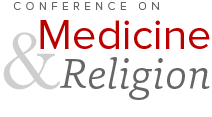Investigations into Local Spiritual and Medicinal Health Practices under Imperial Japanese Rule
Seiji Bessho, BA to be received in 2018, Hiram College, History Department
Many have heard of old wives’ tales to heal the sick. One may brew certain concoction of vile herbs, or rub salve to body parts for healing. Though they may seem highly unrealistic from people who believe in the benefits of progressive scientific expansion, these practices were quite common even as late as the end of 19th and into the 20th century. For example, in Chosen Korea, it was believed that drinking urine of an infant could cure lung disease, while malaria could possibly be cured by consuming porridge infused with powdered human bones. Other practices could be highly spiritual, often involving worshiping some form of natural deity in hope for cure of an ailment that seemed incurable at the time. It seems natural, then, that when Meiji Japan started to expand, it desired to limit, if not eradicate these forms of traditional and “unscientific” practices within their borders as they declared to be advancing towards the modern age. Yet, despite the government efforts, these practices continued, and the extent to which they prevailed was a great concern to the Meiji. This concern was serious enough to prompt the government to hire anthropologists to investigate such beliefs existing throughout their empire in the hope that they could find better methods for their eradication.
This paper aims to qualitatively investigate the extent traditional health practices proliferated despite attempts to discourage local spiritual practices throughout the Japanese empire. Through investigating the records regarding both medicinal and spiritual healing practices left by scholars such as Yanagita Kunio, Akiba Takashi and others, this study attempts to comprehensively understand the challenges to implementing this modern public policy initiative. This study will highlight cases recorded on Japan’s mainland of Honshu, the archipelago outskirts, such as Okinawa and Hokkaido, and its outlying colonies.
By searching into different regions within the Japanese empire during the late 19th to the early 20th century, I hope to not only identify the extent Meiji government may have had to go through to put down the traditional medical practices, but also search for commonalities that may have existed within these differing regions. It would be difficult to explain as to why such commonalities exist, but it may demonstrate a connection between two disparate cultures and colonial government initiatives to uniformly implement modern medical practices despite highly various local healthcare culture.
Many have heard of old wives’ tales to heal the sick. One may brew certain concoction of vile herbs, or rub salve to body parts for healing. Though they may seem highly unrealistic from people who believe in the benefits of progressive scientific expansion, these practices were quite common even as late as the end of 19th and into the 20th century. For example, in Chosen Korea, it was believed that drinking urine of an infant could cure lung disease, while malaria could possibly be cured by consuming porridge infused with powdered human bones. Other practices could be highly spiritual, often involving worshiping some form of natural deity in hope for cure of an ailment that seemed incurable at the time. It seems natural, then, that when Meiji Japan started to expand, it desired to limit, if not eradicate these forms of traditional and “unscientific” practices within their borders as they declared to be advancing towards the modern age. Yet, despite the government efforts, these practices continued, and the extent to which they prevailed was a great concern to the Meiji. This concern was serious enough to prompt the government to hire anthropologists to investigate such beliefs existing throughout their empire in the hope that they could find better methods for their eradication.
This paper aims to qualitatively investigate the extent traditional health practices proliferated despite attempts to discourage local spiritual practices throughout the Japanese empire. Through investigating the records regarding both medicinal and spiritual healing practices left by scholars such as Yanagita Kunio, Akiba Takashi and others, this study attempts to comprehensively understand the challenges to implementing this modern public policy initiative. This study will highlight cases recorded on Japan’s mainland of Honshu, the archipelago outskirts, such as Okinawa and Hokkaido, and its outlying colonies.
By searching into different regions within the Japanese empire during the late 19th to the early 20th century, I hope to not only identify the extent Meiji government may have had to go through to put down the traditional medical practices, but also search for commonalities that may have existed within these differing regions. It would be difficult to explain as to why such commonalities exist, but it may demonstrate a connection between two disparate cultures and colonial government initiatives to uniformly implement modern medical practices despite highly various local healthcare culture.
